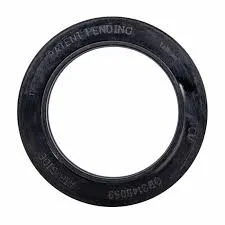8 月 . 19, 2024 12:02 Back to list
GY6 Engine Valve Cover Gasket Replacement and Maintenance Guide
Understanding the GY6 Valve Cover Gasket Importance and Maintenance
The GY6 engine is a remarkable piece of technology often used in scooters, mopeds, and some small vehicles. It is beloved for its reliability and efficiency, making it a popular choice among manufacturers. One of the key components that ensure the smooth operation of a GY6 engine is the valve cover gasket. This article will explore the significance of the GY6 valve cover gasket, common issues that may arise, and maintenance tips for keeping your engine running smoothly.
What is the GY6 Valve Cover Gasket?
The valve cover gasket is a critical component of the GY6 engine that serves as a seal between the cylinder head and the valve cover. Its primary function is to prevent oil leaks and to keep dirt and debris from entering the engine. The gasket is typically made of rubber or silicone, designed to withstand high temperatures and pressures generated within the engine.
A properly functioning valve cover gasket helps maintain optimal engine performance by ensuring that the oil circulates correctly, reducing friction between moving parts and preventing overheating. Furthermore, it protects the engine from contaminants that could lead to severe damage over time.
Common Issues with the GY6 Valve Cover Gasket
Although designed for durability, the valve cover gasket can experience wear and tear due to heat, pressure, and exposure to engine oil. One of the most common warnings of a failing gasket is the presence of oil leaks. If you notice oil pooling around the valve cover or dripping onto the ground, it is a clear indication that the gasket may need to be replaced.
Another symptom of a failing valve cover gasket can be a decrease in engine performance. Oil leaks can lead to low oil levels, which may not provide sufficient lubrication to the engine components. This could cause overheating or increased wear on critical parts, potentially leading to costly repairs down the line.
In some cases, a damaged gasket can even allow air to enter the engine's combustion chamber, leading to irregular engine performance, misfires, or even hard starting issues.
gy6 valve cover gasket

Maintenance Tips for the GY6 Valve Cover Gasket
1. Regular Inspections Periodically check the valve cover gasket for signs of wear, cracks, or oil leaks. Keeping an eye on the engine bay can help catch any potential issues early.
2. Replace When Necessary If you notice oil leaks or other symptoms indicating a failing gasket, it’s best to replace it promptly. Ignoring these signs can lead to more significant engine problems and higher repair costs.
3. Use Quality Parts When it’s time to replace the valve cover gasket, opt for high-quality parts. While cheaper components may save you money upfront, they often do not provide the same level of durability and reliability.
4. Proper Installation Ensuring that the gasket is installed correctly is crucial. Improper installation can lead to leaks even with a new gasket. Torque specifications should be followed closely to avoid over-tightening, which can damage the gasket.
5. Keep Engine Clean Regularly cleaning the engine bay can help spot leaks early. A clean engine not only looks better but can also provide early warning signs for issues that may arise, including problems with the valve cover gasket.
Conclusion
The GY6 valve cover gasket, while small, plays a vital role in maintaining the health and performance of the engine. Understanding its function, recognizing the signs of potential problems, and adhering to proper maintenance practices can help prolong the life of your GY6 engine. By investing time in regular inspections and ensuring the use of quality replacement parts, riders can enjoy a more reliable and efficient ride.